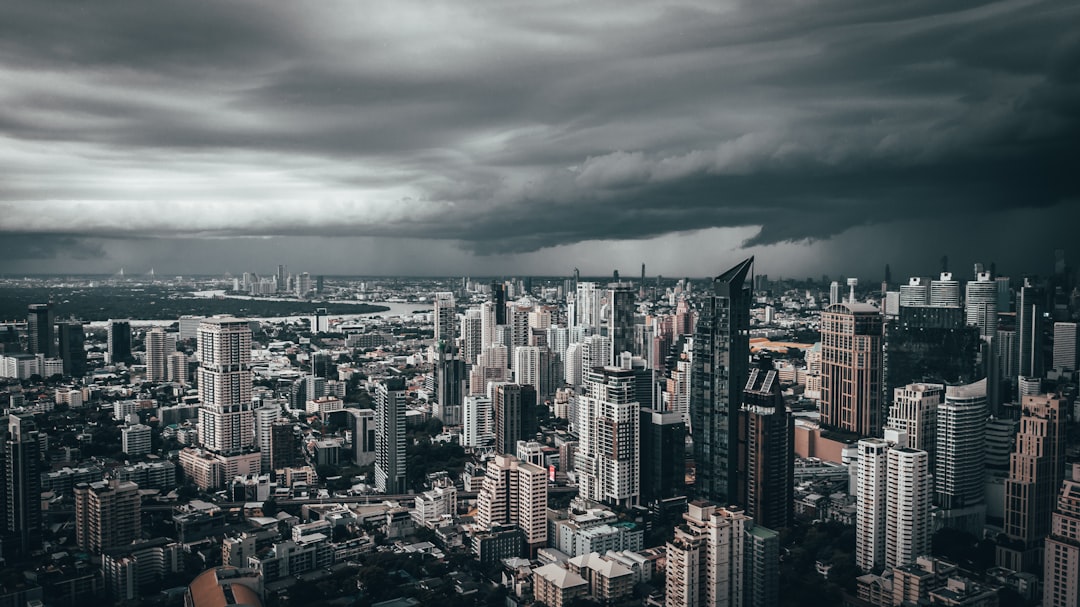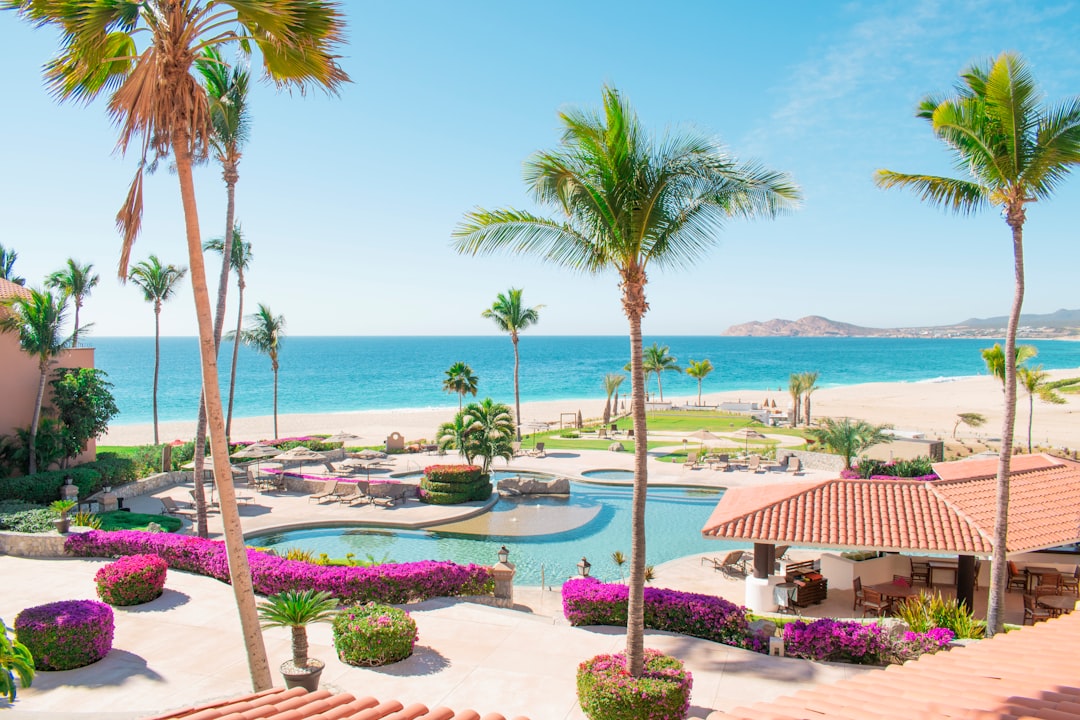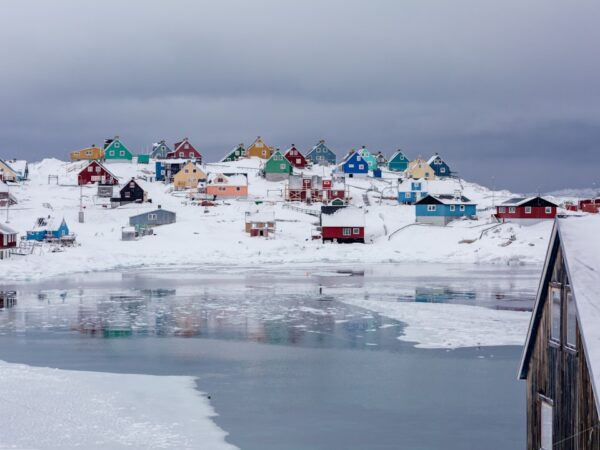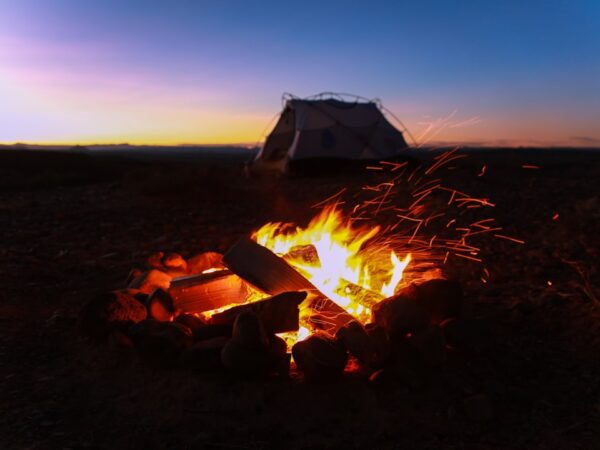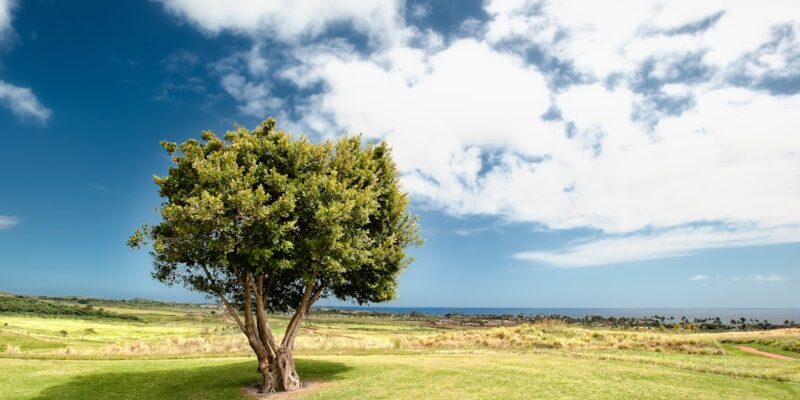
Ultimate Glamping: National Park Getaways in the USA
Glamping, a portmanteau of “glamorous” and “camping,” is a luxurious and upscale form of camping that has gained popularity in recent years. It offers all the comforts and amenities of a hotel or resort while allowing guests to immerse themselves in the beauty and tranquility of nature. Glamping in national parks combines the best of both worlds, allowing visitors to experience the breathtaking landscapes and wildlife of these protected areas while enjoying the comforts and conveniences of a high-end accommodation.
The benefits of glamping in national parks are numerous. Firstly, it allows visitors to connect with nature in a unique and immersive way. Instead of staying in a traditional hotel or resort, glamping accommodations are often located in remote and picturesque locations within the national park, providing guests with unparalleled access to hiking trails, wildlife viewing opportunities, and stunning vistas. Additionally, glamping offers a level of comfort and luxury that traditional camping cannot provide. Guests can enjoy plush beds, private bathrooms, gourmet meals, and other amenities that make their stay more enjoyable and relaxing.
The history of glamping in national parks can be traced back to the early 20th century when wealthy travelers began seeking more comfortable accommodations during their outdoor adventures. These early glampers would bring along luxurious tents, complete with furniture, rugs, and even chandeliers. Over time, glamping evolved to include other types of accommodations such as cabins, yurts, and treehouses. Today, glamping has become a popular option for travelers who want to experience the beauty of national parks without sacrificing comfort and luxury.
Key Takeaways
- Glamping offers a luxurious camping experience in national parks.
- Top glamping destinations in the USA include Yosemite, Yellowstone, and Zion.
- Luxury tents and cabins provide comfortable accommodations in national parks.
- National parks offer a variety of activities and adventures for glampers.
- Glamping in national parks offers eco-friendly and family-friendly options.
Top Glamping Destinations in the USA
1. Yosemite National Park: Located in California’s Sierra Nevada mountains, Yosemite National Park is renowned for its towering granite cliffs, majestic waterfalls, and ancient giant sequoias. Glamping options in Yosemite include luxury tents nestled in the heart of the park, offering stunning views and easy access to hiking trails and other outdoor activities.
2. Yellowstone National Park: As the first national park in the United States, Yellowstone is a true gem. It is home to the famous Old Faithful geyser, as well as an abundance of wildlife including grizzly bears, wolves, and herds of bison. Glamping in Yellowstone allows visitors to stay in comfortable cabins or safari-style tents while exploring the park’s geothermal wonders and natural beauty.
3. Grand Canyon National Park: One of the most iconic natural landmarks in the world, the Grand Canyon offers breathtaking views and unparalleled hiking opportunities. Glamping options near the Grand Canyon range from luxury tents with private decks overlooking the canyon to cozy cabins nestled in the surrounding forests.
4. Zion National Park: Known for its towering red cliffs and narrow slot canyons, Zion National Park is a paradise for outdoor enthusiasts. Glamping in Zion allows visitors to stay in stylish tents or rustic cabins while enjoying easy access to hiking trails, rock climbing, and canyoneering adventures.
5. Acadia National Park: Located on Mount Desert Island in Maine, Acadia National Park offers a unique blend of rugged coastline, dense forests, and granite peaks. Glamping options in Acadia include luxury tents with panoramic ocean views and cozy cabins nestled in secluded wooded areas.
Luxury Tents and Cabins in National Parks
Glamping accommodations in national parks come in various forms, but two of the most popular options are luxury tents and cabins.
Luxury tents, also known as safari tents or glamping tents, offer a unique blend of comfort and nature. These spacious tents are often equipped with plush beds, cozy seating areas, and private bathrooms with hot showers. Some luxury tents even feature private decks or balconies where guests can relax and enjoy the surrounding scenery. The tents are typically well-insulated and weatherproof, ensuring a comfortable stay regardless of the season.
Cabins, on the other hand, provide a more traditional and rustic glamping experience. These cozy accommodations often feature wood-burning stoves or fireplaces, fully-equipped kitchens, and private bathrooms. Cabins can range from small and intimate to large and spacious, making them suitable for couples, families, or larger groups. Many cabins are located in secluded areas within the national park, offering guests a peaceful and tranquil retreat.
Examples of luxury glamping accommodations in national parks include Under Canvas, a company that operates luxury tent camps near several national parks including Yellowstone, Zion, and the Grand Canyon. These camps offer spacious tents with comfortable beds, private bathrooms, and even wood-burning stoves for chilly nights. Another example is AutoCamp Yosemite, which offers stylish Airstream trailers and luxury tents with modern amenities such as private bathrooms and outdoor fire pits.
Activities and Adventures in National Parks
| Activity | Description | Difficulty Level | Duration |
|---|---|---|---|
| Hiking | Walking on trails through the park’s natural landscapes | Easy to Difficult | 1 hour to several days |
| Camping | Staying overnight in designated campsites or backcountry areas | Easy to Difficult | 1 night to several weeks |
| Rock Climbing | Scaling rock formations with ropes and equipment | Difficult | Several hours to several days |
| Wildlife Watching | Observing animals in their natural habitats | Easy | 1 hour to several days |
| Canoeing/Kayaking | Paddling on lakes, rivers, and streams | Easy to Moderate | 1 hour to several days |
| Biking | Riding on designated trails or roads | Easy to Moderate | 1 hour to several days |
One of the main attractions of glamping in national parks is the wide range of activities and adventures available to guests. Whether you’re an avid hiker, wildlife enthusiast, or water sports lover, there is something for everyone in these natural playgrounds.
Hiking and trekking are popular activities in national parks, and glamping allows visitors to easily access some of the best trails. From leisurely walks to challenging multi-day hikes, there are options for all fitness levels. National parks often have well-maintained trails that lead to stunning viewpoints, waterfalls, and other natural wonders.
Wildlife watching is another highlight of glamping in national parks. Many national parks are home to a diverse array of animals, including bears, wolves, elk, and eagles. Glamping accommodations often provide binoculars or spotting scopes for guests to use during their stay. Guided wildlife tours are also available in some parks, allowing visitors to learn more about the local fauna from knowledgeable guides.
Water activities are abundant in national parks that have lakes, rivers, or coastlines. Guests can enjoy kayaking, canoeing, paddleboarding, or even swimming in designated areas. Some glamping accommodations offer watercraft rentals or guided tours for those who want to explore the park’s waterways.
Guided tours and excursions are a great way to learn more about the history, geology, and ecology of a national park. Many glamping accommodations offer guided hikes, nature walks, or even photography workshops led by experienced guides. These tours provide valuable insights and enhance the overall glamping experience.
Other outdoor activities such as rock climbing, mountain biking, horseback riding, and fishing are also available in some national parks. Glamping allows visitors to easily access these activities and make the most of their time in nature.
Dining and Cuisine in National Park Glamping
Glamping in national parks not only offers stunning natural beauty and luxurious accommodations but also provides exceptional dining experiences. From farm-to-table options to local and regional cuisine, guests can indulge in delicious meals while surrounded by nature.
Many glamping accommodations in national parks prioritize sustainability and source their ingredients locally. Farm-to-table dining options are becoming increasingly popular, with some glamping sites even having their own organic gardens or partnering with nearby farms. This ensures that guests can enjoy fresh and seasonal produce during their stay.
Local and regional cuisine is often highlighted in national park glamping experiences. Whether it’s fresh seafood on the coast or hearty barbecue in the mountains, glampers can savor the flavors of the region they are visiting. Some glamping accommodations even offer cooking classes or demonstrations where guests can learn how to prepare local dishes using traditional methods.
Outdoor dining experiences are a common feature of glamping in national parks. Many accommodations provide private decks or picnic areas where guests can enjoy their meals while taking in the breathtaking views. Some glamping sites also offer communal dining areas or outdoor fire pits where guests can gather and socialize.
Cooking and grilling facilities are available in many glamping accommodations, allowing guests to prepare their own meals if they prefer. This is especially convenient for families or larger groups who want to have more control over their dining options. Some glamping sites even provide pre-stocked kitchens or meal delivery services for added convenience.
Eco-Friendly Glamping Options in National Parks
As the importance of sustainability and environmental conservation becomes more evident, many glamping accommodations in national parks are adopting eco-friendly practices and initiatives. These initiatives aim to minimize the impact on the environment while providing guests with a luxurious and comfortable experience.
Sustainable and eco-friendly practices can include using renewable energy sources such as solar power, implementing water conservation measures, and reducing waste through recycling and composting. Some glamping accommodations also prioritize locally sourced materials and products to support the local economy and reduce carbon emissions from transportation.
Green initiatives and programs are often implemented by glamping operators in national parks. These can include educational programs for guests to learn about the local ecosystem, wildlife conservation efforts, or even tree planting initiatives. By participating in these programs, guests can contribute to the preservation of the national park they are visiting.
Examples of eco-friendly glamping accommodations in national parks include Collective Retreats, which operates luxury tent camps in several national parks including Yellowstone and Vail. These camps are designed with sustainability in mind, using solar power, composting toilets, and locally sourced materials. Another example is Treebones Resort in Big Sur, California, which offers eco-friendly yurts with minimal impact on the surrounding environment.
Family-Friendly Glamping in National Parks
Glamping in national parks is an excellent option for families looking to create lasting memories and bond with nature. Many glamping accommodations offer family-friendly amenities and activities that cater to both children and adults.
Family-friendly amenities and activities can include playgrounds, game rooms, or even swimming pools. These amenities provide entertainment for children and allow parents to relax and unwind. Some glamping sites also offer organized activities such as nature walks, scavenger hunts, or arts and crafts workshops specifically designed for kids.
Kid-friendly accommodations are available in many glamping sites. These accommodations can range from spacious tents with separate sleeping areas to cabins with multiple bedrooms. Some glamping sites even offer family-sized tents or cabins with bunk beds to accommodate larger families.
Examples of family-friendly glamping destinations in national parks include El Capitan Canyon in California’s Santa Barbara County. This glamping resort offers a variety of accommodations including safari tents, cabins, and yurts, as well as a range of family-friendly activities such as hiking, biking, and beach access. Another example is Westgate River Ranch Resort & Rodeo in Florida, which offers glamping options such as luxury teepees and cabins, as well as a wide range of activities including horseback riding, airboat rides, and a petting zoo.
Romantic Glamping Getaways in National Parks
Glamping in national parks is also an ideal option for couples looking for a romantic getaway. The combination of stunning natural landscapes, secluded accommodations, and luxurious amenities creates the perfect setting for a romantic retreat.
Romantic amenities and features can include private decks or balconies with panoramic views, outdoor fire pits for cozy evenings under the stars, or even hot tubs or jacuzzis for ultimate relaxation. Some glamping accommodations also offer special packages or add-ons such as couples’ massages or champagne upon arrival.
Secluded and private accommodations are often available in national park glamping sites. These accommodations are designed to provide couples with privacy and intimacy while still being immersed in nature. Whether it’s a secluded cabin nestled in the woods or a luxury tent tucked away in a remote corner of the park, couples can enjoy a romantic escape away from the hustle and bustle of everyday life.
Examples of romantic glamping destinations in national parks include Dunton River Camp in Colorado’s San Juan Mountains. This luxury glamping resort offers stylish tents and cabins along the Dolores River, providing couples with a secluded and intimate setting. Another example is The Resort at Paws Up in Montana, which offers luxury tents and cabins on a sprawling ranch, complete with private hot tubs and outdoor fireplaces.
Glamping Tips and Tricks for National Park Trips
Glamping in national parks requires some planning and preparation to ensure a smooth and enjoyable experience. Here are some tips and tricks to help you make the most of your glamping trip:
1. Packing essentials: When packing for a glamping trip, it’s important to bring appropriate clothing for the weather and activities you plan to engage in. Comfortable hiking shoes, layers for changing temperatures, and rain gear are essential. Don’t forget to pack toiletries, sunscreen, insect repellent, and any necessary medications.
2. Planning and booking tips: National parks can be busy during peak seasons, so it’s advisable to book your glamping accommodations well in advance. Research the different glamping options available in the park you plan to visit and choose one that suits your preferences and budget. Consider factors such as location, amenities, and activities offered.
3. Safety and security tips: While national parks are generally safe, it’s important to take precautions to ensure your safety during your glamping trip. Familiarize yourself with park rules and regulations, including wildlife safety guidelines. Be aware of any potential hazards such as steep cliffs or unpredictable weather conditions. It’s also a good idea to have a first aid kit on hand for minor injuries or illnesses.
4. Other useful tips and tricks: Take advantage of the amenities and services offered by your glamping accommodation, such as guided tours or equipment rentals. Make sure to respect the natural environment and leave no trace of your visit. Be mindful of noise levels and other guests’ privacy, especially in communal areas. Finally, take the time to disconnect from technology and immerse yourself in the beauty of nature.
Why Glamping in National Parks is the Ultimate Experience
Glamping in national parks offers a unique and unforgettable experience that combines the beauty of nature with the comforts of luxury accommodations. Whether you’re seeking adventure, relaxation, or a romantic getaway, glamping allows you to immerse yourself in the stunning landscapes and wildlife of these protected areas while enjoying the amenities and conveniences of a high-end resort.
From luxury tents with panoramic views to cozy cabins nestled in secluded areas, glamping accommodations in national parks cater to a wide range of preferences and budgets. Activities such as hiking, wildlife watching, water sports, and guided tours provide endless opportunities for exploration and adventure.
The dining options in national park glamping are equally impressive, with farm-to-table options, local cuisine, and outdoor dining experiences that allow guests to savor the flavors of the region while surrounded by nature.
Glamping in national parks also offers eco-friendly options for those who prioritize sustainability and environmental conservation. Many glamping accommodations implement green initiatives and programs to minimize their impact on the environment and contribute to the preservation of the national park.
Whether you’re traveling with family, seeking a romantic getaway, or simply looking to connect with nature in a luxurious setting, glamping in national parks is the ultimate experience. So why wait?
FAQs
What is glamping?
Glamping is a form of camping that offers luxurious amenities and accommodations, such as comfortable beds, electricity, and sometimes even hot tubs or private bathrooms.
What are national parks?
National parks are protected areas of land that are managed by the federal government for the purpose of preserving natural resources and providing recreational opportunities.
What are some popular national parks in the USA?
Some popular national parks in the USA include Yellowstone, Yosemite, Grand Canyon, Zion, and Acadia.
What are some benefits of staying at a glamping site near a national park?
Staying at a glamping site near a national park allows you to enjoy the beauty of nature while also having access to comfortable accommodations and amenities. It can also be a more convenient option than traditional camping, as you don’t have to bring your own gear or set up a tent.
What types of accommodations are available at glamping sites near national parks?
Accommodations at glamping sites near national parks can vary, but may include yurts, cabins, tents with beds, treehouses, and RVs.
Are glamping sites near national parks expensive?
The cost of glamping sites near national parks can vary depending on the location, time of year, and type of accommodations. However, they are generally more expensive than traditional camping sites.
Do glamping sites near national parks offer activities?
Many glamping sites near national parks offer activities such as hiking, kayaking, and wildlife watching. Some may also offer guided tours or workshops.


